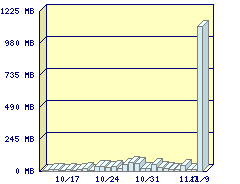The email on ebrahim.org is currently hosted on pair Networks, a great webhost, but one whose email solutions are lacking in flexibility. I want to move to a solution where I can sync Email/Contacts/Calendar over multiple devices, for a domain with 7 mailboxes.
I’m considering two options:
Rackspace
Pros: Has all the features I’d ever need, excellent support, even for small customers.
Cons: Relatively small quota, and completely out of budget (at least US$13/user/month), email migration into Rackspace is difficult for large datasets.
As Rackspace is out of budget, I didn’t really spend much time looking into it in too much detail.
Google Apps Premier
Pros: Within budget (US$50/user/year), wide ranging feature set.
Cons: Technical support lacking (mainly DIY), doesn’t care about small customers, only compatible with old software, and import into Google Apps is a nightmare scenario due to lack of compatibility of migration tools.
However, there are significant issues which block my migration to Google Apps at the moment, most of which are shocking, given Google’s desire to capture the enterprise messaging/collaboration market.
Let’s make a list of missing features:
- Google Apps Sync does not support Outlook 2010
- Google Apps Migration for Microsoft Outlook does not support Outlook 2010
- Google Apps Migration for Microsoft Outlook does not support Windows 7
- There is no supported way to import a mbox format mailbox into Google Apps (there is a workaround where you can use third-party software to import the mbox into Outlook, and then use the Google Apps Migration for Microsoft Outlook, but then the Google migration tool doesn’t support Windows 7 or Outlook 2010, so you’re back to square one)
Sales of Windows 7 began in October 2009, and Office 2010 was made available to volume licensing customers in April 2010. When everybody else already supports Windows 7/Outlook 2010, Google lags far behind and lose all credibility when they claim they are the best solution for enterprise customers.
Enterprise customers rely on predictability, but yet, when asked for a timeline for when the above configurations will be supported, Google replied “we do not have a release date as yet”.
I’m ready to spend money with Google, if only they’d deliver support for modern software. A year in the software world is an eternity, and for Google to not support Windows 7 is akin to a wannabe top-tier airport telling pilots to land using VFR because they’ve not installed an ILS yet.
 I knew while writing my blog entry for the
I knew while writing my blog entry for the